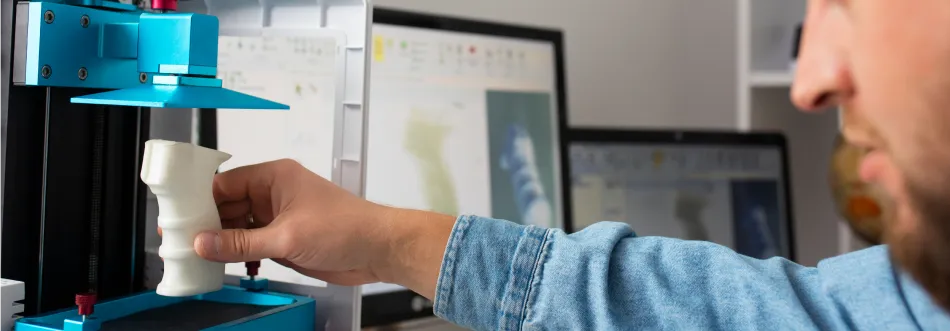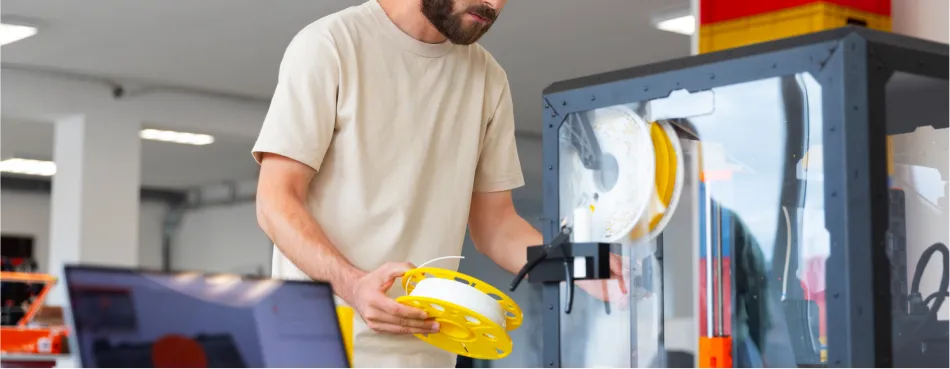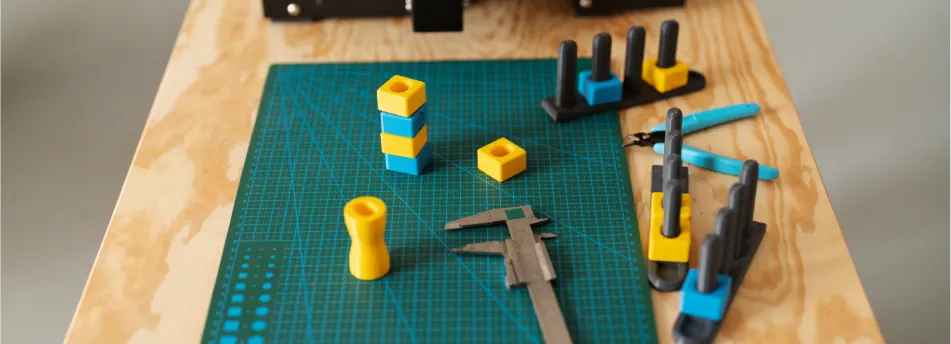
Innovation is a cornerstone of human progress and societal advancement. It drives economic growth, improves quality of life, and addresses global challenges. Throughout history, groundbreaking inventions have revolutionized how we live, work, and interact with the world. Consider the impact of the printing press, the steam engine, electricity, the internet, and, more recently, advancements in artificial intelligence and biotechnology. These innovations started as an idea nurtured and developed into a transformative product or technology.
Inventions profoundly impact society by creating new industries and job opportunities, fostering competition, and enhancing consumer choices. For example, the development of the smartphone has developed a vast sector and revolutionized communication, access to information, and the way we conduct business. Similarly, medical advancements such as MRI machines and telemedicine have dramatically improved healthcare outcomes, making diagnostics and treatments more effective and accessible.

Innovation also plays a crucial role in addressing some of the world’s most pressing issues. Renewable energy technologies like solar and wind power are pivotal in combating climate change. Advances in agricultural technology improve food security by increasing crop yields and reducing waste. In education, digital learning platforms have democratized access to knowledge, allowing students worldwide to learn and grow.
Turning an invention idea into reality is not just about personal achievement; it’s about contributing to society’s collective progress. By fostering an environment that encourages and supports innovation, we can tackle today’s challenges and build a better future for tomorrow.
The transformative power of invention is evident throughout history. Johannes Gutenberg’s 15th- century printing press is often hailed as one of the most significant inventions ever. It revolutionized the dissemination of knowledge, making books and other printed materials accessible to a broader audience and laying the foundation for spreading literacy and education.

The steam engine, developed by James Watt in the 18th century, catalyzed the Industrial Revolution. It powered factories, ships, and trains, drastically increasing productivity and transforming industries and economies. The steam engine’s impact extended beyond economic growth, spurring urbanization and significant social changes as people moved from rural areas to cities in search of employment. the 19th century transformed every aspect of daily life. Thomas Edison’s invention of the electric light bulb and Nikola Tesla’s development of alternating current (AC) electricity made it possible to illuminate homes and streets, power factories, and improve communication through inventions like the telegraph and telephone.
The 20th century saw the rise of the internet, a revolutionary invention that has connected the world in unprecedented ways. Tim Berners-Lee’s creation of the World Wide Web enabled instant access to information and communication, revolutionizing how we work, learn, and interact. The internet has given rise to entirely new industries, from e-commerce to social media, and continues to shape the future of global connectivity and innovation.
Today, advancements in artificial intelligence (AI) and biotechnology are at the forefront of transformative innovation. AI technologies, such as machine learning and neural networks, are revolutionizing industries ranging from healthcare to finance to transportation. AI-driven diagnostics and personalized medicine improve patient outcomes and make healthcare more efficient and accessible.
Biotechnology advancements, such as CRISPR gene editing, hold the potential to cure genetic diseases, improve crop yields, and address environmental challenges. These technologies are pushing the boundaries of what is scientifically possible and raising important ethical and regulatory questions that society must navigate.

Innovation is crucial in tackling some of the world’s most pressing issues. Climate change, for example, requires innovative solutions to reduce greenhouse gas emissions and transition to renewable energy sources. Technologies such as solar panels, wind turbines, and energy storage systems are essential in this effort. Moreover, innovative approaches to energy efficiency, carbon capture, and sustainable agriculture are critical in mitigating the impacts of climate change. In healthcare, innovation is critical to addressing global health challenges. Developing vaccines, diagnostic tools, and treatments for infectious diseases has saved millions of lives. For instance, the rapid development and deployment of COVID-19 vaccines demonstrate the power of innovation in responding to global health crises.
Education is another area where innovation plays a pivotal role. Digital learning platforms and educational technologies have made quality education accessible to students worldwide, regardless of their location or socioeconomic status. These tools are helping bridge the education gap and equip students with the skills needed for the future.
Creating an environment that encourages and supports innovation is essential for turning inventive ideas into reality. This involves fostering a culture of creativity and risk-taking, providing access to resources and mentorship, and ensuring a supportive legal and regulatory framework.
Educational institutions play a vital role in nurturing innovation by promoting STEM (science, technology, engineering, and mathematics) education and encouraging hands-on, experiential learning. Government policies and funding programs can support research and development, incentivize entrepreneurship, and protect intellectual property.
The private sector also has a significant role in driving innovation. Companies can invest in research and development, collaborate with startups and academic institutions, and create innovation hubs that bring together diverse talents and expertise. Fostering an inclusive environment that values diverse perspectives can lead to more creative and impactful solutions.
Turning an invention idea into reality is a journey that requires vision, perseverance, and support. The significance of innovation in driving societal progress underscores the importance of supporting and nurturing inventors. By understanding the impact of historical and contemporary inventions, recognizing the role of innovation in addressing global challenges, and fostering an environment that encourages creativity and risk-taking, we can continue to drive progress and build a better future for all. The following sections of this blog will delve deeper into the steps involved in bringing an invention to life, the resources available for inventors, and the common challenges faced along the way.
Turning an invention idea into reality involves transforming a concept into a tangible product or technology that can be used, sold, or applied to address a specific problem or need. This process bridges the gap between creativity and practical application, allowing innovative ideas to make a real-world impact. An invention that remains an idea has value once it is developed, produced, and brought to the market where it can benefit users.
The significance of turning invention ideas into reality is multifaceted. Firstly, it drives economic growth by creating new products and services, which can lead to new businesses and job opportunities. Secondly, it fosters technological advancement and competitive markets, encouraging companies to innovate and stay ahead continuously. Thirdly, it improves the quality of life by providing solutions to everyday problems and addressing more extensive societal issues, such as healthcare, environmental sustainability, and education.
Before investing time and resources into developing an invention, it’s crucial to identify whether there is a demand for the product. This involves understanding market needs and potential. Market research helps inventors determine if their idea addresses a real problem and if a sufficient customer base is willing to purchase the product.
To identify market needs, inventors can start by:
By thoroughly understanding the market, inventors can refine their ideas to meet customer needs better and increase the chances of commercial success. It’s essential to be practical and grounded in this phase. While dreaming big is important, starting small and validating ideas through testing and feedback is crucial.

A feasibility study assesses the practicality of an invention idea, considering various factors such as technical requirements, cost, market potential, and legal constraints. It helps inventors determine if their idea is viable and worth pursuing.
Critical components of a feasibility study include:
Technical Feasibility: Evaluating whether the invention can be developed using available technology and resources. This includes assessing the complexity of the design, the availability of materials, and the technical expertise required. For instance, if an inventor proposes a new type of wearable health monitor, they must ensure that the necessary sensors and materials are available and that the design can be implemented with current technology.
Financial Feasibility: Analyzing the costs of developing, manufacturing, and marketing the invention. This includes estimating initial investment, production costs, pricing strategies, and potential revenue. Financial feasibility is crucial for ensuring that the project is economically viable and that investors will likely see a return on their investment.
Market Feasibility involves assessing the demand for the invention, identifying target customers, and evaluating the competitive landscape. This consists of analyzing market size, growth potential, and customer behavior. Understanding the market helps inventors position their products effectively and develop strategies to capture market share.

Conducting a feasibility study provides a comprehensive understanding of the risks and opportunities associated with the invention, helping inventors make informed decisions and develop effective strategies.
Successful innovations often do not involve drastic changes but rather slight improvements or new applications of existing ideas at the right moment. History is replete with examples of inventions that made significant impacts through relatively minor changes:
These examples highlight the importance of timing and the ability to identify and meet a specific need. Inventors should focus on understanding their target market and testing their ideas on a small scale before committing significant resources.
Testing and validation are critical steps in the invention process. They help ensure that the product meets customer needs and performs as expected. This phase involves creating prototypes, conducting user testing, and gathering feedback to make necessary adjustments.

The ideation and conceptualization phase is the foundation of the invention process. It involves generating creative ideas and refining them into a viable concept. This stage requires creativity, critical thinking, and problem-solving skills.
Generating Ideas:

Market research is essential to validate your invention idea and ensure there is a demand for it. This process involves gathering data on market trends, customer needs, and the competitive landscape.
Market Research Steps:

A feasibility study assesses whether your invention idea is practical and viable. It includes technical, financial, market, and legal feasibility assessments.
Feasibility Study Components:
Prototyping is a crucial step in the invention process. It involves creating a preliminary model of your invention to test its functionality, design, and usability.
Prototyping Steps:

Prototypes can vary in complexity depending on the development stage and the testing phase’s specific goals. Types of Prototypes:
Intellectual property (IP) protection is crucial for safeguarding your invention from unauthorized use or reproduction. It provides exclusive rights to the inventor, allowing them to control how their invention is used and distributed.
Types of Intellectual Property:

Patent Application Steps:
Legal Resources and Support for Inventors
Inventors can seek support from various legal resources to navigate the patent process:
Funding is essential for developing, manufacturing, and marketing your invention. Several funding options are available to inventors:
Funding Sources:

Resources Available for Inventors
Inventors can access various resources to support their journey:
Manufacturing is a critical step in bringing your invention to life. Finding the proper manufacturer and understanding the production process is essential for ensuring quality and efficiency.
Steps to Find Manufacturers:

A well-thought-out marketing strategy, including branding, advertising, and sales strategies, is crucial for successfully launching your product.
Marketing Strategy Components:*
Effective distribution ensures your product reaches customers efficiently and cost- effectively. Distribution Strategies:
Common Hurdles Inventors Face
The journey from idea to market-ready product is often fraught with challenges. For any inventor, it is crucial to recognize these hurdles and prepare to address them.
Challenge
One of the inventors’ most significant obstacles is securing the necessary funds to develop, prototype, and market their inventions. Financial constraints can stall the progress of even the most promising ideas. The costs associated with patenting, prototyping, and production can be substantial, and with sufficient capital, many inventors find it easier to move forward.
Impact:
Lack of funding can limit the ability to create high-quality prototypes, protect intellectual property, and launch effective marketing campaigns. It may also lead to missed opportunities for market entry and scaling. Financial constraints often force inventors to cut corners, which can compromise the quality and viability of the final product.
Addressing the Challenge:
Challenge: Turning a concept into a functional product often involves overcoming various technical challenges. These can range from engineering issues, material selection, manufacturing difficulties, and software development for tech-based inventions. Impact: Technical difficulties can delay development timelines, increase costs, and compromise the functionality or quality of the final product. They require inventors to possess or acquire significant technical expertise or collaborate with skilled professionals. Overcoming these challenges ensures the product meets its intended purpose and standards.

Addressing the Challenge:
Challenge:
The competitive landscape can be daunting, especially for inventors entering markets with established players. Understanding the competition and differentiating the new products from existing ones is critical.
Impact:
High competition can make it difficult for new products to gain market traction. Inventors must offer unique value propositions and develop strategies to capture market share effectively. Please do so to avoid the product being overshadowed by established brands and missing out on potential customers.
Addressing the Challenge:
Challenge:
Navigating the legal aspects of bringing an invention to market, such as obtaining patents, ensuring compliance with regulations, and protecting intellectual property, can be complex and costly.
Impact:
Legal challenges can result in delays, increased costs, and even the risk of litigation. Please protect intellectual property to avoid others copying or profiting from the invention. Legal compliance is essential for avoiding fines and ensuring the product can be sold in various markets.
Addressing the Challenge:
Patent Search and Filing: Conduct a thorough patent search to ensure your invention is novel and not already patented. File for patents to protect your intellectual property. Legal Counsel: Engage with legal professionals specializing in intellectual property and patent law to navigate the legal landscape effectively. Compliance: Ensure your product meets all relevant safety, environmental, and industry-specific regulations.
Successfully overcoming these challenges requires strategic planning, resourcefulness, and leveraging available support systems.
Strategy:
Building a robust network and finding mentors can provide invaluable support and guidance. Mentors with industry experience can offer insights, advice, and connections that help navigate challenges.
Benefits:
Implementation:
Strategy:
The internet offers a wealth of resources and communities that can support inventors through every stage of the development process. Leveraging these resources can provide knowledge, tools, and connections.
Benefits:
Implementation:
Strategy:
The invention process is dynamic, and continuous learning and adaptation are crucial for success. Inventors must stay informed about industry trends, technological advancements, and market changes.
Benefits:
Implementation:
Highlight Real-Life Examples of Successful Inventions
Examining the journeys of successful inventors provides invaluable insights and inspiration for aspiring inventors. Here, we highlight brief profiles of notable inventors and the key takeaways from their experiences.
Profile:
British inventor James Dyson is renowned for developing the first bagless vacuum cleaner. Frustrated with the loss of suction in his conventional vacuum cleaner, Dyson applied the principles of cyclone technology, which he observed in industrial sawmills, to create a vacuum that maintained its suction.
Journey:
Dyson’s journey was not easy. He created over 5,000 prototypes before perfecting his design. Despite facing numerous rejections from established manufacturers, Dyson persisted. He eventually decided to manufacture and market his vacuum cleaner independently.
Key Takeaways:
####### Sara Blakely – Spanx
Profile:
Sara Blakely founded Spanx, a company specializing in body-shaping undergarments. Blakely, a former door-to-door fax machine salesperson, invented Spanx out of personal necessity. She wanted a product that provided a smooth look under white pants.
Journey:
Blakely invested her life savings of $5,000 into her idea. She researched fabrics, developed a prototype, and even wrote her patent application to save costs. Facing initial skepticism, she managed to get her product into significant retailers through relentless pitching and networking.
Key Takeaways:
Profile:
Steve Jobs and Steve Wozniak co-founded Apple Inc., revolutionizing personal computing. Their invention of the Apple I and Apple II computers made computing accessible to the general public.
Journey:
Jobs and Wozniak started in Jobs’ garage, creating a more user-friendly and affordable computer than existing models. They faced numerous technical and financial challenges but succeeded through innovative thinking, strong partnerships, and strategic vision.
Key Takeaways:
Include Testimonials or Stories from Inventors
Real-life testimonials and stories from successful inventors offer valuable lessons and inspiration.
Profile:
An American inventor, Dean Kamen, is known for inventing the Segway, among many other innovations, including medical devices like the insulin pump.
Quote and Advice:
“Every once in a while, a new technology, an old problem, and a big idea turn into an innovation.” – Dean Kamen
Journey and Challenges:
Kamen faced significant technical challenges and market skepticism with the Segway. However, his perseverance and belief in his product’s potential kept him moving forward. His focus on improving lives through technology highlights the broader impact inventions can have.
Key Takeaways:
Profile:
Thomas Edison, one of history’s most prolific inventors, is famous for inventing the practical incandescent light bulb, among other innovations.
Quote and Advice:
“I have not failed. I’ve just found 10,000 ways that won’t work.” – Thomas Edison.
Journey and Challenges:
Edison’s journey to invent the light bulb was marked by extensive experimentation and numerous failures. His ability to learn from each failure and adapt his approach was crucial to his success.
Key Takeaways:
Profile:
Mary Anderson invented the windshield wiper in 1903. Inspired by a trolley car ride on a snowy day, she devised a solution to improve drivers’ visibility.
Quote and Advice:
“Necessity is the mother of invention.” – Mary Anderson
Journey and Challenges:
Anderson faced skepticism and resistance when she first introduced her invention. Despite these challenges, she patented her design, which eventually becoming standard automobile equipment.
Key Takeaways:
Conclusion
The journeys of successful inventors like James Dyson, Sara Blakely, Steve Jobs, Steve Wozniak, Dean Kamen, Thomas Edison, and Mary Anderson offer invaluable lessons for aspiring inventors. These stories emphasize the importance of persistence, resourcefulness, vision, adaptability, and learning from failure. Networking, seeking mentorship, and leveraging available resources are critical strategies for overcoming common challenges in the invention process. By studying these examples and incorporating their key takeaways, inventors can better navigate their journeys from idea to market-ready products, ultimately significantly impacting society.
Throughout this blog, we’ve delved into the intricate process of turning an invention idea into a market-ready product. The journey is multifaceted and requires a structured approach, broken down into several key steps:
1. Ideation and Conceptualization:
2. Research and Development (R&D):
3. Prototyping:
4. Patent and Legal Protection:
5. Funding and Resources:
6. Manufacturing and Marketing:
7. Launching and Scaling:
The invention process requires meticulous planning and thorough research. Identifying market needs, conducting feasibility studies, and protecting intellectual property are all critical steps that lay the foundation for success. Additionally, perseverance is a crucial attribute for inventors. The journeys of successful inventors like James Dyson, Sara Blakely, and Thomas Edison demonstrate that persistence and resilience are vital in overcoming obstacles and achieving success.
Planning ensures that each stage of the invention process is executed efficiently, minimizing risks and maximizing the potential for success. Research provides the necessary insights to make informed decisions, validate ideas, and navigate the competitive landscape. Perseverance drives inventors to continue refining their ideas, seek solutions to challenges, and remain committed to their vision despite setbacks.
Motivational Closing Remarks
Turning an invention idea into reality is a challenging yet rewarding journey. It requires a combination of creativity, strategic thinking, and unwavering determination. While the path may be fraught with obstacles, each challenge presents an opportunity for learning and growth. Remember that every successful inventor started with an idea and faced similar hurdles. What sets them apart is their willingness to take the first step and persist through the challenges.
As an aspiring inventor, you have the potential to make a significant impact on the world. Your ideas can solve problems, improve lives, and drive societal progress. Whether you are motivated by a desire to address a specific need, innovate within an industry, or simply bring your creative vision to life, the journey of invention is a powerful way to contribute to the betterment of society.
The Potential Impact of Your Inventions on Society
The inventions of today shape the world of tomorrow. From technological advancements that revolutionize industries to everyday innovations that enhance our quality of life, inventions play a crucial role in driving progress. By turning your ideas into reality, you have the opportunity to leave a lasting legacy and create a positive impact on society.
Consider the impact of past inventions: the light bulb transformed how we live and work, the smartphone revolutionized communication and access to information, and medical devices like insulin pumps have saved countless lives. Your invention, no matter how small it may seem, has the potential to make a difference.
Taking the first step towards developing your invention is the beginning of an exciting journey. Embrace the process, seek resources and support, and remain resilient in facing challenges. The world needs innovative thinkers and problem-solvers like you. Your invention could be the next significant breakthrough that changes lives and shapes the future.
Conclusion
In conclusion, the journey from idea to invention is a complex but rewarding process that requires careful planning, thorough research, and unwavering perseverance. By following the steps outlined in this blog, leveraging available resources, and learning from the experiences of successful inventors, you can navigate the challenges and bring your ideas to life. Remember, every great invention started as just an idea. With dedication, strategic planning, and the proper support, you have the potential to create something truly impactful. Take the first step today and embark on your journey as an inventor. Your innovation could be the next significant advancement that benefits society and leaves a lasting legacy.